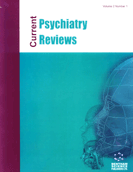Abstract
Recent guidelines have stated that anesthesia for electroconvulsive therapy (ECT) should be administered by specially trained anesthesiologists. Physicians who perform ECT should have sufficient knowledge about hemodynamics as well as the physiological and pharmacologically unique effects of ECT. Electrical currents during ECT stimulate the autonomic nervous system and provoke unique hemodynamic changes in the systemic and cerebral circulation. Excessive alterations in heart rate, blood pressure, and cardiac functions should be prevented by medications with anticholinergic and antihypertensive effects. Ventilation should be adequately maintained to ensure efficacy of the therapy and to stabilize hemodynamics immediately after the electrical stimulation. Although reports of serious complications with this therapy are not frequent, patients with ischemic heart disease or cerebrovascular disease must be managed with special care to prevent myocardial infarction or neurological disorders. Appropriate physical management by physicians greatly contributes to the safe establishment of ECT under muscle relaxation. To maintain social confidence in this procedure and to further refine this therapy, physicians should play an essential role in both the clinical activities and laboratory research of ECT.
Keywords: Electroconvulsive therapy, respiratory, hyperventilation, beta-blockers
 6
6

